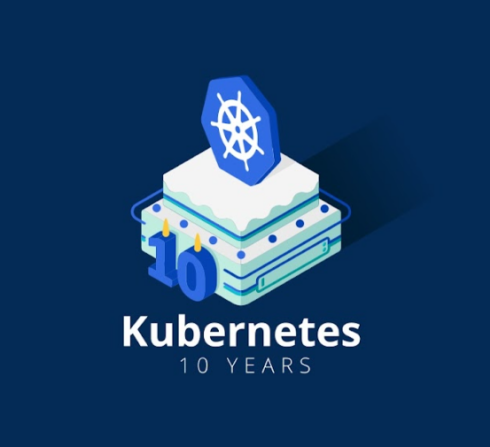
When we first started the ITOps Open Source Project of the Week series, Kubernetes was already such a large and popular project that no one needed us to tell them about it, so it’s never actually been featured in this series. But given that the project is celebrating its 10 year anniversary this month, we thought now is the perfect time to give it its time in the spotlight.
Kubernetes (sometimes called k8s for short) is a container orchestration system that has significantly changed the way that applications are deployed. With Kubernetes, developers can deploy, manage, and scale containerized applications across multiple hosts.
It was first created by Google in 2013 by Craig McLuckie, Joe Beda, and Brendan Burns. At the time containerization and orchestration were not widely used concepts, but that changed when Docker was released.
“By popularizing a lightweight container runtime and providing a simple way to package, distribute and deploy applications onto a machine, the Docker tooling and experience popularized a brand-new cloud native approach to application packaging and maintenance. Were it not for Docker’s shifting of the cloud developer’s perspective, Kubernetes simply would not exist,” Burns wrote in a blog post in 2018.
He went on to explain that experimenting with Docker led the three of them to think how they could bring a cloud-native approach to software deployment to more people. Docker was good at building individual containers and running them on individual machines, but they saw a need to have a tool that could deploy many containers across many different machines, Burns explained.
“As we thought about it some more, it became increasingly obvious to Joe, Craig and I, that not only was such an orchestrator necessary, it was also inevitable, and it was equally inevitable that this orchestrator would be open source. This realization crystallized for us in the late fall of 2013, and thus began the rapid development of first a prototype, and then the system that would eventually become known as Kubernetes,” Burns wrote.
By 2014, a number of other developers had joined the project, including Ville Aikas, Tim Hockin, Dawn Chen, Brian Grant, and Daniel Smith.
Version 1.0 was released the following year at OSCON 2015, and then in 2016, the project was donated to the Cloud Native Computing Foundation (CNCF), which was actually formed specifically to steward Kubernetes.
According to the CNCF, the project now has over 74K contributors from nearly 8,000 companies, 314K code commits, 263K pull requests, and 3.4 million contributions. It has also spawned a number of projects that work with it, such as Argo, Helm, Istio, and more. And each year, thousands of technologists flock to KubeCon, which now has multiple events worldwide, in North America, Europe, China, India, and more.
“Kubernetes not only shattered expectations for itself but it set a North Star for the entire CNCF ecosystem. CNCF has since grown to more than 184 cloud native projects and the success of Kubernetes in the CNCF established a baseline of what was possible for others,” the CNCF wrote in a blog post.
You may also like…
- Kubernetes 1.30 is now available
- Kubernetes Benchmark Report reveals significant improvement in usage
- Navigating Kubernetes: The common mistake newcomers make








